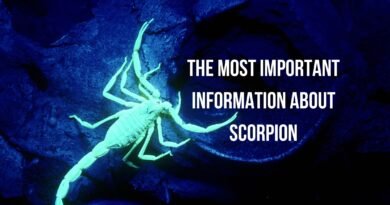7 Prehistoric marine animals that will intrigue you
Do you ever wonder what type of sea creatures lived during prehistoric times? They were very different from the contemporary marine animals, so naturally, it intrigues several scientists and audiences. Recent research suggests that while many of them have gone extinct today, several of them are still alive to this day. Fascinating, isn’t it?
Although most people contemplate the prehistoric era as dinosaurs, they weren’t the only unique creatures living on the planet back then. Let us take you through some of the most exciting marine animals from this time.
Kronosaurus
No, they were not dinosaur siblings or anything. These were giant marine creatures that were as long as 40 feet, with massive weight. Their teeth are said to be 12 inches long. Most people believe that they lived on our planet around 150 to 200 million years ago. They also had an excellent feast daily that contained colossal turtles, giant squids and marine reptiles.
These creatures were known to be early cretaceous pliosaur from Australian regions. You will not believe that they had a bite force of around 33000 pounds per square inch. Naturally, they were ferocious prehistoric marine animals.
Spinosaurus
Spinosaurus were enormous lizard-like carnivore dinosaurs that could potentially reach up to 50 feet. They were discovered around 1915 with very few bones. However, they had large spines that made them different from other marine creatures. It had a long snout and resembled a crocodile. They had a wide-open mouth and also featured a high-spined tail. They also had shorter limbs which proved that they were swimmers as well.
Generally, the spinosaurus was prone to regulate temperature and had a large hump instead of a sail. They were also quite large and enjoyed a good feast of fleshy animals underwater.

Megalodon
If you are afraid of the great white sharks today, we wonder what you would have done if you saw megalodons underwater. These were the giant sharks at that time and also the biggest fishes present underwater. They mainly were present around 25 million years ago and were believed to grow as big as 50 feet. Since they had giant teeth that helped them kill their predators on the spot, they are known as Carcharocles Megalodons.
Apart from that, Megalodons were also on top of their food chain and ate giant creatures like whales and seals. We know very little about whether they ate sharks or not. However, they may have eaten them.
Elasmosaurus
These creatures were very slow swimmers and lived in the Cretaceous period. They were so big that they weighed as much as 2000 kilograms. Their length was also 14meters and had four paddles for swimming. Although we do not know about its reproduction, scientists believe that it may have birthed its young underwater like modern-day sea snakes.
Generally, Elasmosarus ate small bony fishes, molluscs, belemnites and small stones that helped them to digest their food correctly. Fossils suggest that they lived in North America, but there is a lot more evidence to uncover.
Liopleurodon
During the late Jurassic period, liopleurodons were meat-eating marine creatures that could grow as big as 20 feet and a skull of 5 feet in length. With its strong sense of smell, it would sniff ferociously underwater to catch hold of its prey. It was also on top of its food chain in those days and could eat anything it wanted. When we tried to discover the animal, its teeth were the only remains that scientists could uncover so far. So, much is to be known about them in the long run.
Liopleurodons were speedy swimmers. Their four broad, flat and long flippers enabled them to swim to and fro very rapidly. These were some of the most compelling reasons for them to prey on animals so easily.

Coelacanth
These were large marine fishes found around the coast of Africa. When scientists discovered their fossils, they found that these fish creatures went extinct nearly 66 million years ago. These were lobe-finned fishes that had large fins and muscles. They were known to be around six feet long and 200 pounds in weight.
These bottom-dwelling fishes could live up to 60 years and were very rare. They also had a unique form of locomotion that made them so different from the rest of the animals underwater. Also, they didn’t have a backbone; they had notochord that made them appear different. They also had tiny brains and spent most of their days resting in caves.
Bananogmius
These lived during the Late Cretaceous age and were highly bony fishes. They featured flat jaws, palatine plates that enabled them to crush their prey without any inconvenience. Clams and molluscs were their favourite prey of all.
The Bottom Line
Most of these prehistoric marine animals have gone extinct today. However, research continues to help you know more about them and unleash the different lifestyle they led from today’s marine animals.




